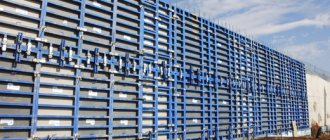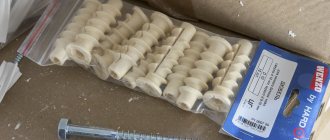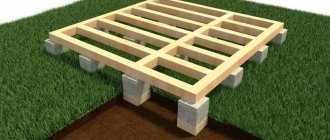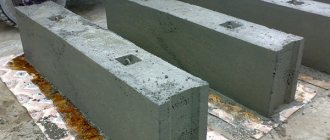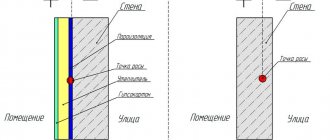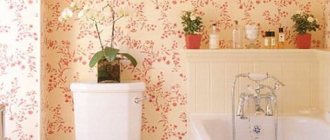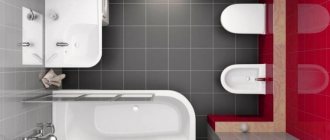- 1 Types of masonry 1.1 Cement-sand mixture
- 1.2 Glue
The foundation has been poured, the next stage is the construction of walls. The construction of aerated concrete walls requires strict adherence to technology. With the start of laying the first row, the question arises - how to fasten the blocks of cellular concrete? Let's look in detail at solutions that can hold porous materials together, which will help you assess the situation and make the right decision.
Types of masonry
The issue of a binding solution for blocks can be resolved at the stage of purchasing masonry building materials, having decided on the purpose of the building. The masonry can be cement or adhesive. The thermal conductivity of the first and second methods is higher than the thermal conductivity of the material itself; the thermal characteristics of the structure depend on the thickness of the connecting solution.
Return to contents
Cement-sand mixture
Until recently, a solution of cement and sand was the only correct solution for fastening blocks when constructing walls. The advantage of the mortar is that the shape of cellular concrete may be imperfect; the layer of mortar between the blocks reaches 1.5-2 cm and covers all irregularities. This type of fastening does not have good thermal characteristics and will require additional thermal insulation for the walls.
Return to contents
Glue
Laying a wall of aerated concrete blocks using glue.
The adhesive type of fastening is relatively new on the construction market. The glue blocks must be of the correct shape, without irregularities. A 2-3 mm layer of adhesive between the concrete gives the wall excellent thermal conductivity characteristics that do not require additional thermal insulation.
It is more financially profitable to lay cellular blocks on cement, but this method is more suitable for mixed partitions and utility structures; it is better to use glue to fasten the blocks of the walls of an apartment building.
Return to contents
The second method of laying walls from cellular concrete blocks.
The second method differs from the first in that the solution
to form vertical transverse seams, apply not to the end of the previously laid stone, but
to the stone being laid again
:
- the assistant mason, making up for the tying row
, lays stones on the underlying tying row
with poking
; - on the upper spoon faces
of the laid stones, the assistant mason applies (with leveling) a layer of mortar
10 mm
; - the lead mason then turns the stone over with the voids facing up
and places it in place, pressing it against the previously laid stone.
Wall masonry
Usually
it is carried out using a two-row dressing system
spoon row
overlapping .
Method of joining with glue
Having completed the preliminary work - unloading cellular concrete, preparing glue, we proceed to the construction of walls. The technology is simple and does not require special training. For a high-quality result, we will need the following equipment:
- concrete mixer for mixing the adhesive mixture;
- drill with a nozzle for mixing components;
- Master OK;
- level;
- grinding float;
- hard grater;
- spatula with notches at the end;
- containers for solution;
- cement, sand, water, glue.
Nowadays, there are convenient machines on the market that help you accurately apply the adhesive solution. The new tool simplifies the work and helps control the thickness of the applied solution. Laying blocks is done faster, reducing material costs and work time.
Prepare a solution from a dry mixture by adding dry components to a previously measured amount of water. The finished solution is prepared in small portions, stirred periodically, preventing separation. In the cold season, mixtures with special antifreeze additives are used.
Return to contents
Laying the first row
The laying of external walls should begin from the corners.
The accuracy of laying the next rows depends on the correctly laid first block. The first row is placed on the prepared foundation. Using a level, give the blocks an even horizontal position; with proper markings, laying out the rest of the cellular concrete will not be difficult.
To achieve a perfectly even line, the row is laid out on a cement mixture, thereby leveling out differences in the foundation. Continue work with the formation of corner blocks, ensuring the location is exactly in place. The blocks are laid out along one line. Sweep each element from dust and dirt.
The edge of the block is smeared with glue using a serrated spatula, an even layer of the mixture is laid out on the foundation and the prepared block is laid. The building level checks the correct horizontal position of the row. If the outer concrete elements do not meet standard standards, a saw is used to give the required shape. Element by element - the first line is laid out. Having completed the layout, check the row for the presence of roughness and remove them with a special grater. After completing the inspection, the entire area is rubbed with a damp brush.
Return to contents
Second and subsequent stripes
All subsequent rows are laid out with a purely adhesive solution prepared according to the rules. The adhesive mixture covers the entire side surface of the newly laid material and the entire width of the lower, lined up blocks. The seam when professionally installed reaches 3 mm.
The work should start from the corners, in the side edges of which the fishing line is stretched. Lay out the material along a stretched line, checking with a level that it is horizontal. Don't forget about bandaging the masonry, but don't overuse it either.
According to the rules, half a block of dressing is done with fresh solution, once in three stripes.
Return to contents
Wall elements
The lintel is supported at each end by at least 200 mm.
Jumpers are structures that require special attention. Wall lintels are load-bearing structures installed on door slabs, under window blocks, internal and external walls. By using simple elements in masonry walls, a uniform surface is achieved, which simplifies finishing work.
Possible methods for installing jumpers:
- The use of factory-made material “stitched” with metal reinforcement made of cellular concrete or reinforced concrete. Factory reinforced lintels are used to their full length; cutting them is unacceptable. The recess of the base under the ceiling is at least 25 cm on both sides. Depending on the thickness of the wall, one or two lintels are used side by side. Each structure has an inscription about the permitted load and the amount of reinforcement inside. Reinforced cellular structures are preferred. They are ideal for use: the size fits well with the blocks; excellent thermal conductivity characteristics; laid on glue.
- Monolithic U-shaped cellular structures are prepared using wooden supports mounted in the openings. U-structures are laid out on them. A frame of reinforcement is laid in the recess and filled with mortar. It is important to vibrate the concrete solution to completely eliminate air bubbles. The supports are removed only after the concrete has completely hardened (28 days).
- Creation of reinforced concrete structures using formwork. Factory-made forms made of reinforced concrete, or those made independently, are used for interior work. Due to the high degree of thermal conductivity, structures installed outside require additional insulation. The process of installing reinforced concrete differs from reinforced structures in that it is laid using cement mortar, and the formwork is removable.
Return to contents
Types of cellular concrete blocks
Depending on the production technology, blocks are divided into:
- aerated concrete
, obtained from a mixture of cement, sand and reagents that form foam. Such blogs are produced in autoclaves under high pressure and exposure to hot steam. - foam concrete
, differing from aerated concrete in composition and processing method. The foaming agent in this material is soap or hydrolyzed protein. In the production of foam concrete blocks, natural hardening technology is used. - foam-gas concrete
, obtained by combining combinations of two methods.
Internal partitions
Cellular concrete with a width of 7.5 - 10 cm is ideal for the construction of internal partitions. The wall will be strong, with good thermal insulation. A wall or partition inside a building is erected according to the same rules as for exterior work. First you need to make markings for installation using a special device. The surfaces of walls and floors must be perfectly smooth, without cracks, holes, or potholes.
The glue prepared according to the instructions is applied to the edges of the material, then we proceed to laying the partitions. We lay out the inner wall in a checkerboard pattern. To give strength, we start even rows with a half block. The blocks are connected to each other with a thin layer of glue.
To improve the strength of the partitions inside the building, they are erected parallel to the external walls, fastening them with dressings. When constructing internal structures after the construction of external walls, for better stability, metal hooks are placed in the internal and external partitions. The number of hooks is at least 3, located along the entire height of the wall.
The erected structure is left for three days, and the resulting gaps between the ceiling and the partition are filled with polyurethane foam to maintain the required level of thermal insulation. For rooms with high humidity, the use of porous building material is not recommended.
Return to contents
Pros and cons of foam concrete
Since foam concrete is light in weight, its blocks are much larger in size than bricks. At the same time, it is 70-80% cheaper than brick and 20-25% cheaper than aerated concrete. For laying walls made of foam concrete blocks, only traditional sand-cement mortar can be used . This is due to the insufficient accuracy of the configuration of foam concrete blocks. If the blocks are placed on top of each other, then the lack of parallelism of the sides is striking. Permissible parallelism deviations are up to 10 mm.
Processing blocks to ensure a smooth wall surface complicates construction work and increases its duration. In addition, foam concrete is difficult to process. The uneven distribution of gas bubbles in the volume of the material leads to the fact that it crumbles and chips during processing. Self-made foam concrete has high sorption moisture levels due to the heterogeneity of its porous structure. This increases the likelihood of freezing of external walls and leads to a reduction in the service life of the foam concrete house. On average, the frost resistance of foam concrete is 25 cycles, which approximately corresponds to the frost resistance of brick, but four times lower than that of aerated concrete.
The shrinkage of foam concrete is approximately 2-3 mm. Such significant shrinkage, combined with the tendency of the material to form cement stone from the solution, contributes to the appearance of microcracks and further destruction of foam concrete during operation. The possibility of cracks somewhat limits the choice of materials for interior decoration of the house. As evidenced by reviews of home owners about foam concrete, the outer walls should not be left unfinished. Exposure to precipitation, together with the high sorption abilities of the material, leads to the rapid destruction of foam concrete walls. It is recommended to use vapor-permeable materials for both exterior and interior decoration.
The advantage of foam concrete is its excellent soundproofing properties.
Preventing errors
Mandatory horizontal waterproofing of walls made of cellular concrete.
Compliance with a number of rules will help to do high-quality work and increase the repair-free service life of the structure.
- Waterproofing. The porous material perfectly absorbs moisture, but despite this, it is highly resistant to liquid when it evaporates quickly. It’s not worth taking risks; it’s better to protect the walls from getting wet. Cellular concrete requires waterproofing. First of all, take care of the horizontal waterproofing (roofing felt, oilcloth), which separates the load-bearing walls from the foundation, then do the vertical one. They connect with each other.
- No moisture or damage. Cellular concrete is characterized by strength, but under mechanical stress it is easy to damage. When working with the material, you should use a rubber or wooden hammer and move it carefully. Weather conditions during construction are different, nothing bad will happen if the blocks get wet. Under the sun's rays they will dry. But no one can guarantee the appearance of the sun after the rain. It is necessary to protect the concrete from getting wet. There is a protective film on the blocks, do not remove it until the last concrete is used, it will protect the pallet of material.
- Stability of walls. It is necessary to ensure a dressing between the inner and outer wall.
- Window sill area. In walls made of cellular concrete, the window sill area must be reinforced with reinforcement.
Return to contents
Characteristics of non-autoclaved foam concrete blocks
One of the varieties of products made from cellular concrete are foam blocks, which are able to retain heat well. If we compare it with brick, then this material has a 3 times lower thermal conductivity coefficient. The weight of these products is insignificant; compared to expanded clay concrete, it is 2.5 times less. Blocks made of cellular concrete are easy to transport and install, this is their advantage over conventional building materials.
Using them, you can build houses without setting up a heavy buried foundation at the first stage, which has a positive effect on the speed and ease of construction. We are talking about low-rise buildings, while high-rise buildings still need to have a solid foundation. Foam concrete blocks are distinguished by decent strength. For example, load-bearing walls of three-story houses can be laid using D900 brand products.



